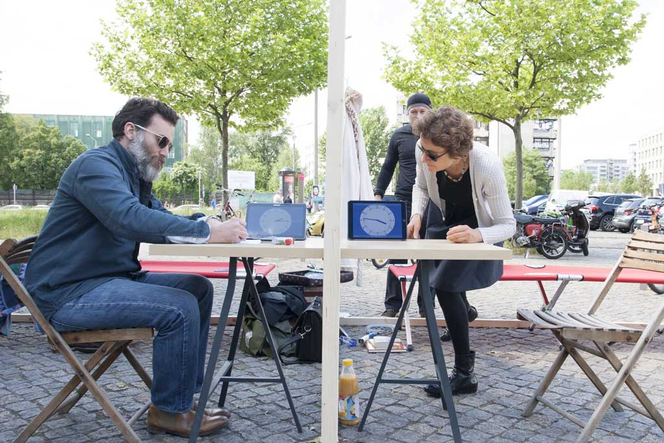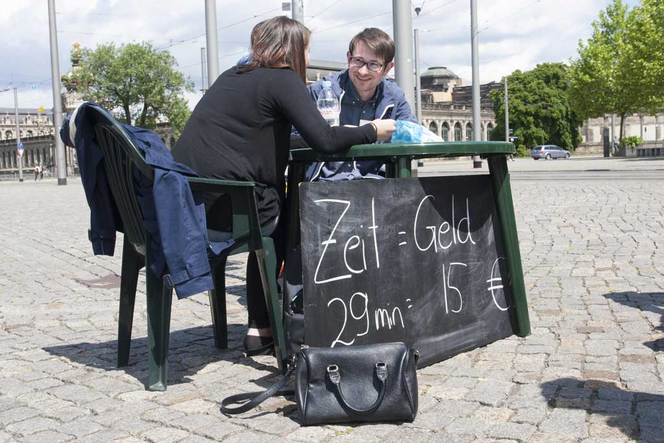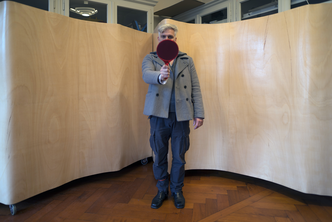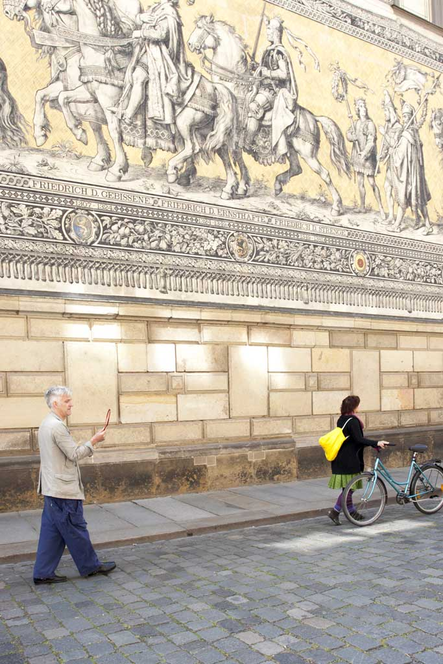Schmidtea mediterranea
Steffen Werner with David Jörg, Albert Thommen, Jochen Rink, Lucas Wetzel, Uta Gneisse
Max Planck Institute for the Physics of Complex Systems (more) and Max Planck Institute of Molecular Cell Biology and Genetics (more)
Regeneration of major body parts and an eternal life - what remains a dream for human beings is just a trifle for many flatworms like Schmidtea mediterranea. Even a tiny fragment cut from such a worm is able to reshape into a complete miniature version of the original. Some worms even use this ability to create offspring: by splitting into pieces they reproduce and in some sense become younger again. Furthermore, the worms also seem to rejuvenate during starvation. When lacking food, they can shrink by more than a factor of 40 in length, gradually obtaining characteristics of younger animals.
What would it be like if humans could reset or reverse their lifetime, too?
Deep Geological Repository
Thorsten Stumpf with Frank Bok, Harald Foerstendorf, Carola Franzen, Katharina Müller, Anke Richter, Simon Schmitt
Institute of Resource Ecology, Helmholtz-Zentrum Dresden-Rossendorf (more)
1,000,000 years – this is the period of time it will take until the radionuclides, which humans produced in a century, have finally decayed. This is also the period of time, in which deep geological repositories have to prevent dissemination of radioactive waste into the biosphere. To illustrate this unimaginable forecasting horizon, 1,000,000 years are projected onto a “time rope” – into the past as well as into the future. By highlighting historical and prospective moments of mankind the “time rope” visualizes how long humanity will have to deal with the disposal of radioactive waste.
Induced Pluripotent Stem Cell (iPSC) Technology
Jared Sterneckert with Benedikt Kretner, Lara Marrone, Jessica Bellmann, Tanya Levin
DFG-Center for Regenerative Therapies Dresden
Cluster of Excellence / TU Dresden (more)
We use reprogramming to model neurodegenerative diseases such as Parkinson's disease (PD) in a cell culture dish. Normally, PD happens deep in the brain, which makes it very difficult to study, and without understanding the causes of PD, we can't develop treatments for patients. Reprogramming enables us to make a limitless number of cells that we can use to replay diseases like PD in a cell culture dish where we can study them. A medical doctor takes a biopsy of a patient with PD – usually a bit of skin. The skin cells are reprogrammed to become induced pluripotent stem cells (iPSCs), which are capable of becoming any cell type in the body. Then, we direct the differentiation of these iPSCs into neurons that are similar to the neurons of the original patient with PD. These patient-specific neurons can be studied to understand what causes PD, how the disease progresses, and drug-like compounds can be tested on the neurons to find new medicines.
C.elegans
Andrés F. Diaz Delgadillo with Florian Frisch
Max Planck Institute of Molecular Cell Biology and Genetics (more)
We are moulding liquid that constrains the spaces of our bodies. Viscous or fluid, elastic or rigid, all our parts coexist within these boundaries, giving rise to function and shape. Here liquid organelles thermodynamically transit between two reversible states droplet and diffused state creating selective exclusion / inclusion zones with liquid properties transiting across time and temperature helping out the worms to endure the passage of stress and time, thus immortalizing their germ line.
Circadian Rhythm
David Jörg with Steffen Werner, Lucas Wetzel, Uta Gneisse
Max Planck Institute for the Physics of Complex Systems (more)
There is a clock inside of you. It is located in your brain (more precisely in the hypothalamus), works through biochemical reactions, and has a period of about 24 hours. It regulates your bodily functions, prepares you for activity during the day and for rest during the night. If you have ever experienced a jet-lag after a transcontinental flight, you are aware of the consequences of this clock being delayed with respect to the local day-night cycle: poor sleep and concentration, increased fatigue and decreased appetite, among other symptoms. Given that your inner clock is so important to cope with daily life — what would happen if your inner clock would run backwards?
Time is Money
Jona Postner, Anna Straubinger, Felix Rauschert, Fabian Köhler, Anne-Katrin Otto,
Claudia Schmeißer, Andy Obermeyer
Institute for Transport and Economics / TU Dresden (more)
Almost everybody knows the saying “time is money”. And indeed, in many fields of science the monetary value of time is of great interest. In the field of transportation the concept is a valuable research element for engineers as well as economists. Interestingly, savings in travel time are usually the most substantial economic benefit of transport projects, which in turn justify public investments. In this context the monetary value of time is an important parameter and its determination has been in the interest of researchers for decades; the main question has remained the same until today: What is a person’s trade-off between money and time?
Photos and videos by: Kristina Berndt, Florian Dombois, Alena Drahokoupilová, Thomas Eller, Sophia Mix, Jonas Müller, Steffen Werner
Video Cut: Tirza Bosshardt
Avant-garde revisited
Florian Dombois with Irène Mélix, Lisa Poelker
Independent Artist (more)
The development of art in the 20th century was deeply influenced by the idea of progress, where the artists should form the avant-garde, a term still resonating its etymological past of the vanguard as the leading part of an advancing military formation. This hallmark of Modernism has been questioned, maybe most prominently by Postmodernism. Nevertheless the idea of progress seems not to be extinguished, when listening today to either modernistic or postmodernistic art critics. The fundamental question arises: What is Art, if time is regressing?










































